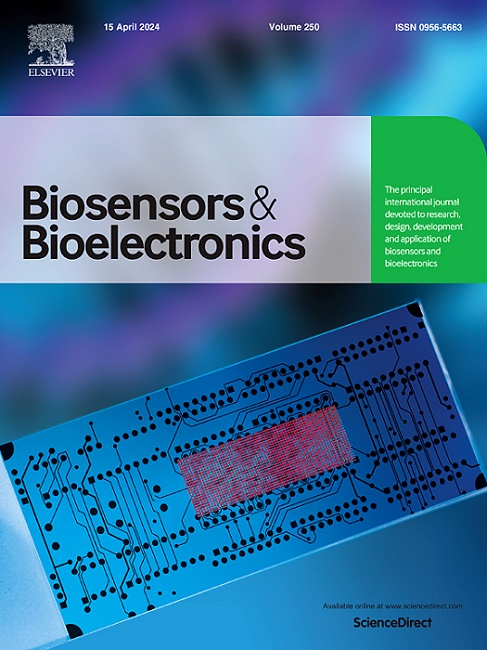A rapid and ultrasensitive RPA-assisted CRISPR–Cas12a/Cas13a nucleic acid diagnostic platform with a smartphone-based portable device
IF 10.7
1区 生物学
Q1 BIOPHYSICS
引用次数: 0
Abstract
The spread of infectious diseases can be controlled by early identification of the source of infection and timely diagnosis to stop transmission. Real-time fluorescence quantitative polymerase chain reaction (PCR) is the current gold standard for pathogen diagnosis, with high detection sensitivity and accuracy. However, due to the need for specialized equipment, laboratories, and personnel, it is difficult to achieve rapid and immediate diagnosis during large-scale infectious disease outbreaks. Herein, an optimized CRISPR-based nucleic acid detection method was developed that reduces the CRISPR detection time to 15 min while maintaining high sensitivity. By using nucleic acid extraction-free and lyophilization techniques, the ‘sample-in-result-out’ detection of the two target genes of SARS-CoV-2, the human internal reference gene, and the negative quality control sample can be completed in 20 min, with a sensitivity of 0.5 copies/μL. Additionally, to facilitate the application, a smartphone-based reverse transcription-recombinase polymerase amplification (RT-RPA)-assisted CRISPR-rapid, portable nucleic acid detection device was developed, integrating functions such as heating, centrifugation, mixing, optical detection and result output. Process control, output, and uploading of detection results were conducted through smartphones. The device is not dependent on a power supply and can perform on-site rapid virus detection in resource-limited settings. Real-time uploading of results helps to rapidly implement epidemic prevention and control measures, providing an innovative means of detection, control, and prevention of virus-based infectious diseases. This important work provides a new and effective tool to manage potential future outbreaks of infectious diseases.
求助全文
约1分钟内获得全文
求助全文
来源期刊

Biosensors and Bioelectronics
工程技术-电化学
CiteScore
20.80
自引率
7.10%
发文量
1006
审稿时长
29 days
期刊介绍:
Biosensors & Bioelectronics, along with its open access companion journal Biosensors & Bioelectronics: X, is the leading international publication in the field of biosensors and bioelectronics. It covers research, design, development, and application of biosensors, which are analytical devices incorporating biological materials with physicochemical transducers. These devices, including sensors, DNA chips, electronic noses, and lab-on-a-chip, produce digital signals proportional to specific analytes. Examples include immunosensors and enzyme-based biosensors, applied in various fields such as medicine, environmental monitoring, and food industry. The journal also focuses on molecular and supramolecular structures for enhancing device performance.
 求助内容:
求助内容: 应助结果提醒方式:
应助结果提醒方式:


